您好,登錄后才能下訂單哦!
您好,登錄后才能下訂單哦!
小編給大家分享一下 matplotlib subplot子圖怎么用,希望大家閱讀完這篇文章之后都有所收獲,下面讓我們一起去探討吧!
MATLAB和pyplot有當前的圖形(figure)和當前的軸(axes)的概念,所有的作圖命令都是對當前的對象作用。可以通過gca()獲得當前的axes(軸),通過gcf()獲得當前的圖形(figure)
import numpy as npimport matplotlib.pyplot as pltdef f(t):return np.exp(-t) * np.cos(2*np.pi*t) t1 = np.arange(0.0, 5.0, 0.1) t2 = np.arange(0.0, 5.0, 0.02) plt.figure(1) plt.subplot(211) plt.plot(t1, f(t1), 'bo', t2, f(t2), 'k') plt.subplot(212) plt.plot(t2, np.cos(2*np.pi*t2), 'r--') plt.show()
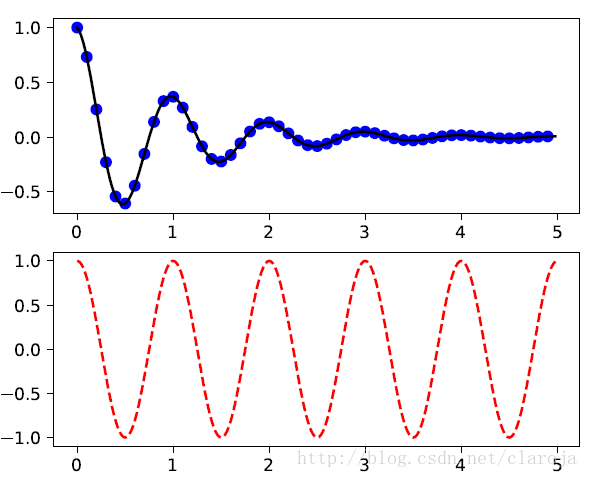
如果不指定figure()的軸,figure(1)命令默認會被建立,同樣的如果你不指定subplot(numrows, numcols, fignum)的軸,subplot(111)也會自動建立。
import matplotlib.pyplot as plt
plt.figure(1) # 創建第一個畫板(figure)plt.subplot(211) # 第一個畫板的第一個子圖plt.plot([1, 2, 3])
plt.subplot(212) # 第二個畫板的第二個子圖plt.plot([4, 5, 6])
plt.figure(2) #創建第二個畫板plt.plot([4, 5, 6]) # 默認子圖命令是subplot(111)plt.figure(1) # 調取畫板1; subplot(212)仍然被調用中plt.subplot(211) #調用subplot(211)plt.title('Easy as 1, 2, 3') # 做出211的標題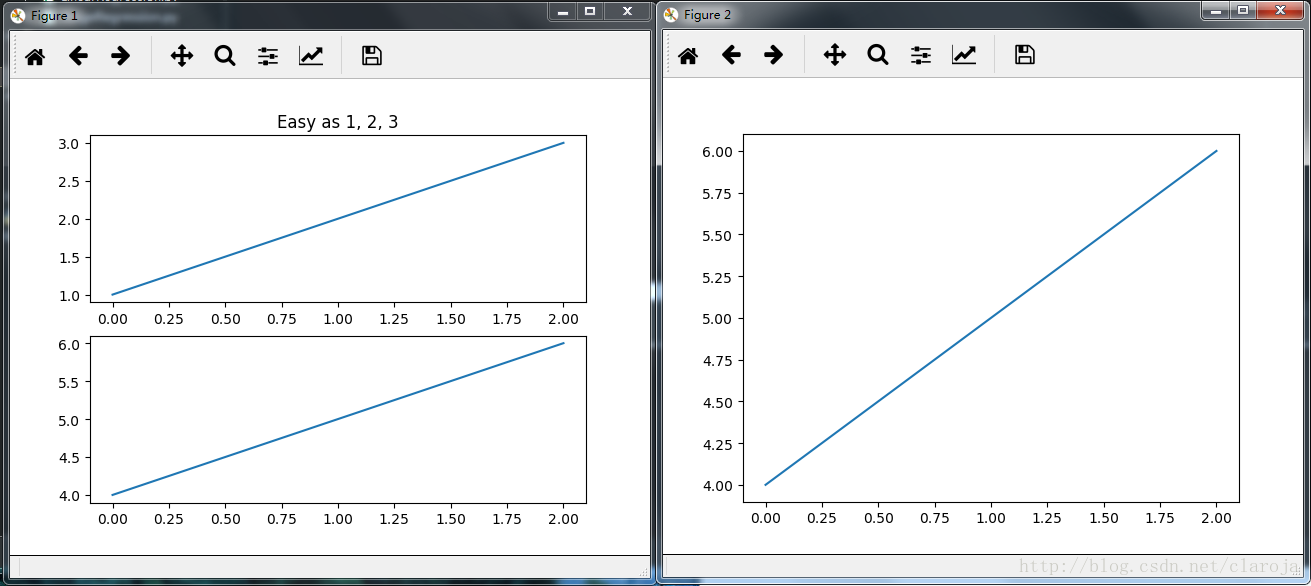
subplot()是將整個figure均等分割,而axes()則可以在figure上畫圖。
import matplotlib.pyplot as plt
import numpy as np# 創建數據dt = 0.001t = np.arange(0.0, 10.0, dt)
r = np.exp(-t[:1000]/0.05) # impulse responsex = np.random.randn(len(t))
s = np.convolve(x, r)[:len(x)]*dt # colored noise# 默認主軸圖axes是subplot(111)plt.plot(t, s)
plt.axis([0, 1, 1.1*np.amin(s), 2*np.amax(s)])
plt.xlabel('time (s)')
plt.ylabel('current (nA)')
plt.title('Gaussian colored noise')#內嵌圖a = plt.axes([.65, .6, .2, .2], facecolor='y')
n, bins, patches = plt.hist(s, 400, normed=1)
plt.title('Probability')
plt.xticks([])
plt.yticks([])#另外一個內嵌圖a = plt.axes([0.2, 0.6, .2, .2], facecolor='y')
plt.plot(t[:len(r)], r)
plt.title('Impulse response')
plt.xlim(0, 0.2)
plt.xticks([])
plt.yticks([])
plt.show()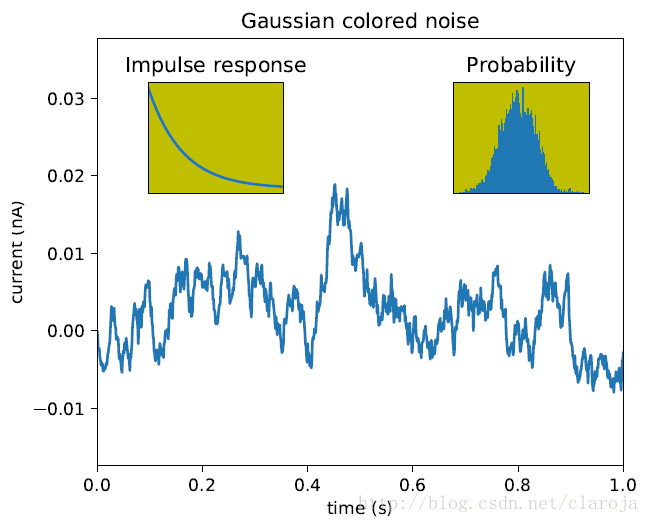
你可以通過clf()清空當前的圖板(figure),通過cla()來清理當前的軸(axes)。你需要特別注意的是記得使用close()關閉當前figure畫板
GridSpec指定子圖所放置的幾何網格。
SubplotSpec在GridSpec中指定子圖(subplot)的位置。
subplot2grid類似于“pyplot.subplot”,但是它從0開始索引
ax = plt.subplot2grid((2,2),(0, 0))ax = plt.subplot(2,2,1)
以上兩行的子圖(subplot)命令是相同的。subplot2grid使用的命令類似于HTML語言。
ax1 = plt.subplot2grid((3,3), (0,0), colspan=3)ax2 = plt.subplot2grid((3,3), (1,0), colspan=2)ax3 = plt.subplot2grid((3,3), (1, 2), rowspan=2)ax4 = plt.subplot2grid((3,3), (2, 0))ax5 = plt.subplot2grid((3,3), (2, 1))
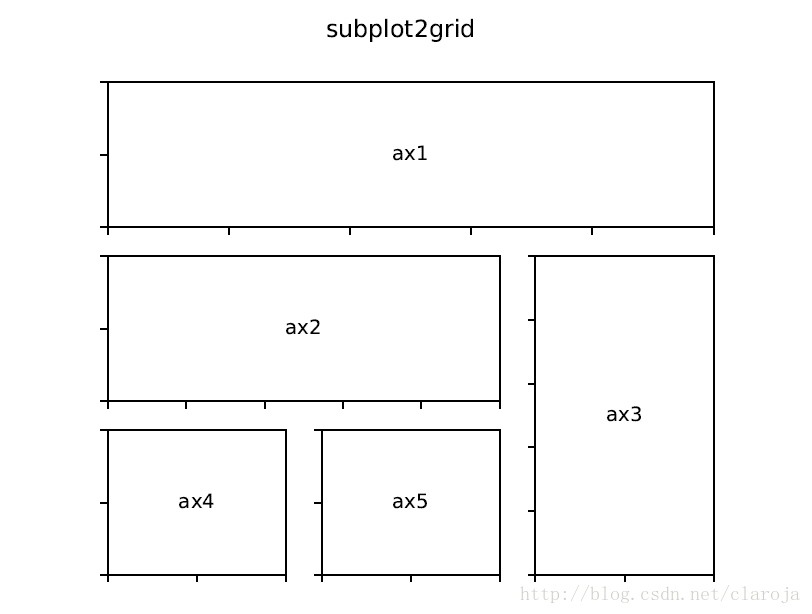
ax = plt.subplot2grid((2,2),(0, 0))
相當于
import matplotlib.gridspec as gridspec gs = gridspec.GridSpec(2, 2) ax = plt.subplot(gs[0, 0])
一個gridspec實例提供給了類似數組的索引來返回SubplotSpec實例,所以我們可以使用切片(slice)來合并單元格。
gs = gridspec.GridSpec(3, 3)ax1 = plt.subplot(gs[0, :])ax2 = plt.subplot(gs[1,:-1])ax3 = plt.subplot(gs[1:, -1])ax4 = plt.subplot(gs[-1,0])ax5 = plt.subplot(gs[-1,-2])
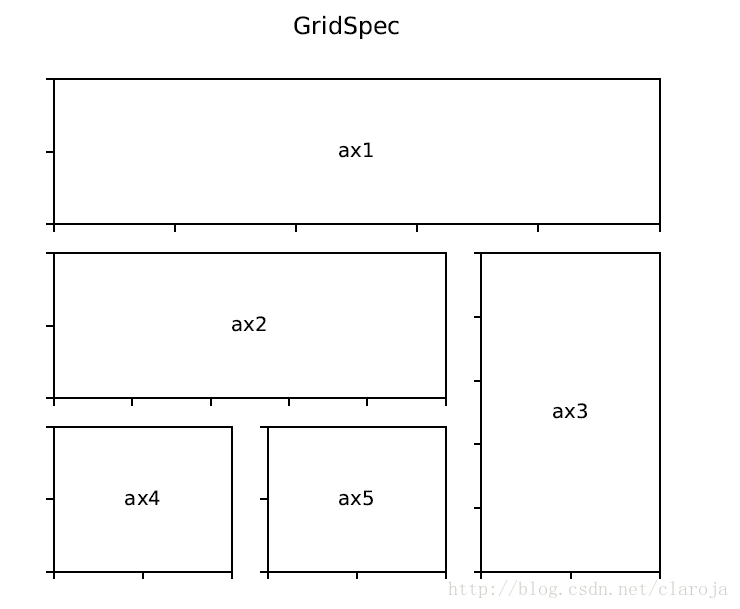
當GridSpec被使用后,你可以調整子圖(subplot)的參數。這個類似于subplot_adjust,但是它只作用于GridSpec實例。
gs1 = gridspec.GridSpec(3, 3) gs1.update(left=0.05, right=0.48, wspace=0.05) ax1 = plt.subplot(gs1[:-1, :]) ax2 = plt.subplot(gs1[-1, :-1]) ax3 = plt.subplot(gs1[-1, -1]) gs2 = gridspec.GridSpec(3, 3) gs2.update(left=0.55, right=0.98, hspace=0.05) ax4 = plt.subplot(gs2[:, :-1]) ax5 = plt.subplot(gs2[:-1, -1]) ax6 = plt.subplot(gs2[-1, -1])
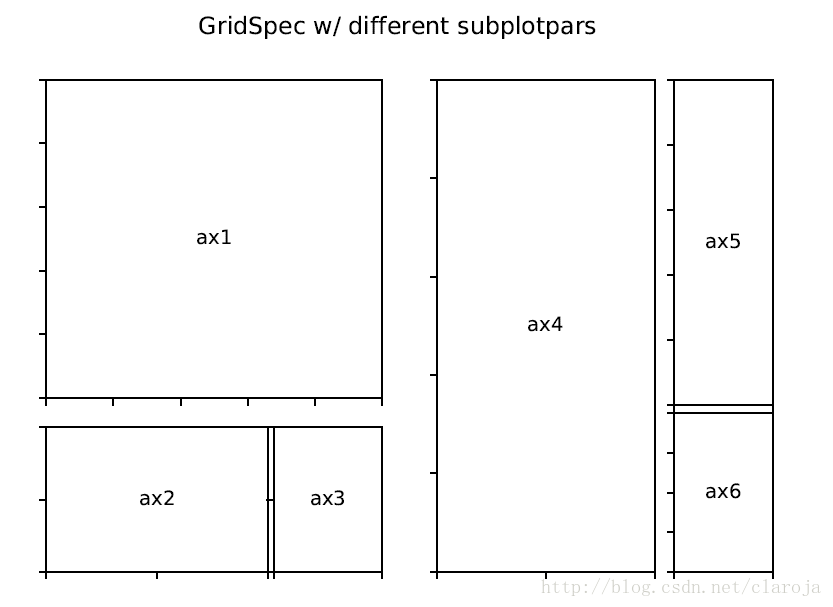
gs0 = gridspec.GridSpec(1, 2)gs00 = gridspec.GridSpecFromSubplotSpec(3, 3, subplot_spec=gs0[0])gs01 = gridspec.GridSpecFromSubplotSpec(3, 3, subplot_spec=gs0[1])
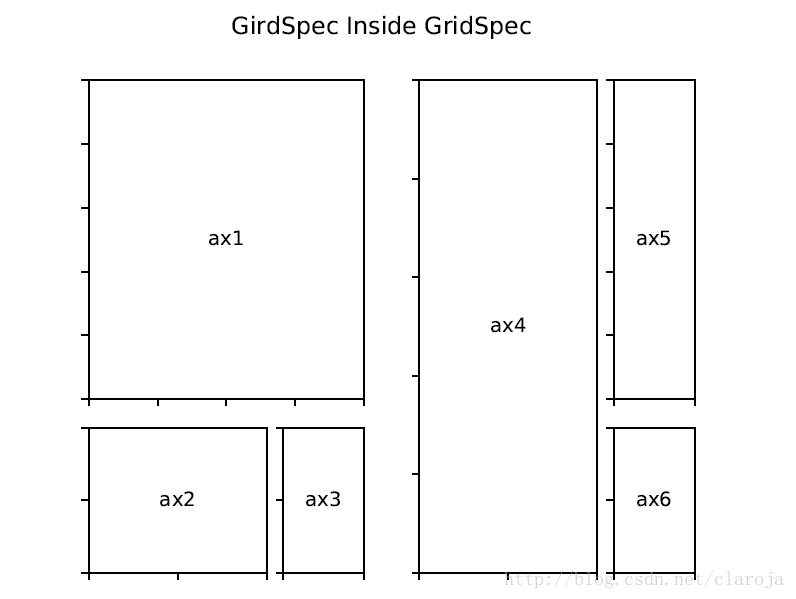
下圖是一個3*3方格,嵌套在4*4方格中的例子
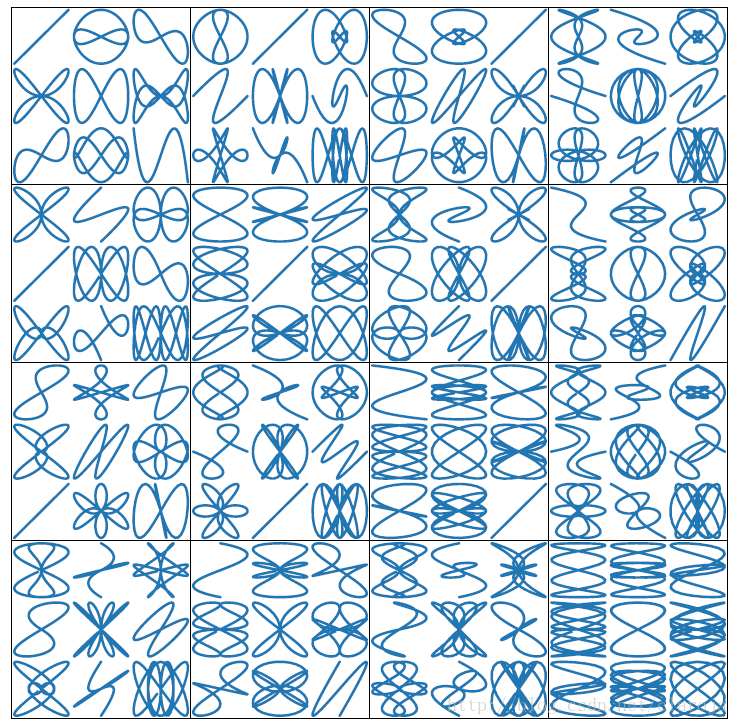
調整GridSpec的尺寸
默認的,GridSpec會創建相同尺寸的單元格。你可以調整相關的行與列的高度和寬度。注意,絕對值是不起作用的,相對值才起作用。
gs = gridspec.GridSpec(2, 2, width_ratios=[1,2], height_ratios=[4,1] ) ax1 = plt.subplot(gs[0]) ax2 = plt.subplot(gs[1]) ax3 = plt.subplot(gs[2]) ax4 = plt.subplot(gs[3])
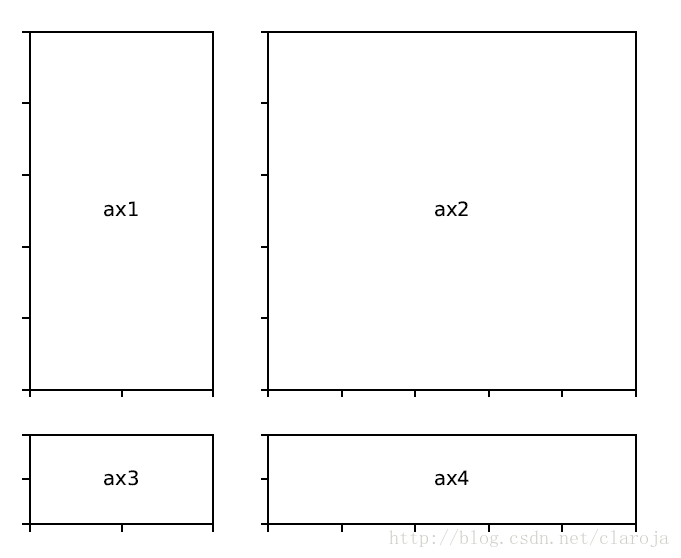
tigh_layout自動調整子圖(subplot)參數來適應畫板(figure)的區域。它只會檢查刻度標簽(ticklabel),坐標軸標簽(axis label),標題(title)。
軸(axes)包括子圖(subplot)被畫板(figure)的坐標指定。所以一些標簽會超越畫板(figure)的范圍。
plt.rcParams['savefig.facecolor'] = "0.8"def example_plot(ax, fontsize=12):ax.plot([1, 2])
ax.locator_params(nbins=3)
ax.set_xlabel('x-label', fontsize=fontsize)
ax.set_ylabel('y-label', fontsize=fontsize)
ax.set_title('Title', fontsize=fontsize)
plt.close('all')
fig, ax = plt.subplots()
example_plot(ax, fontsize=24)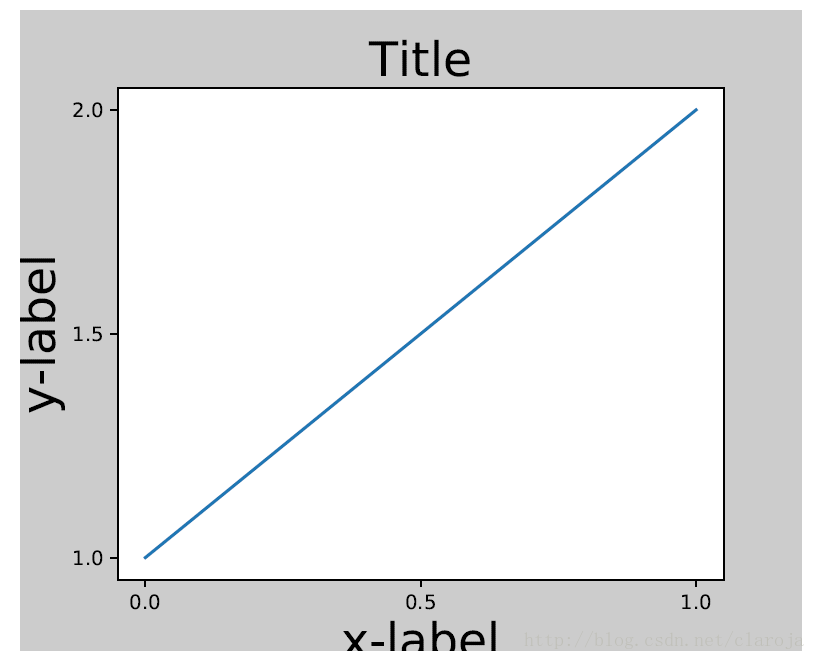
對于子圖(subplot)可以通過調整subplot參數解決這個問題。Matplotlib v1.1 引進了一個新的命令tight_layout()自動的解決這個問題
plt.tight_layout()
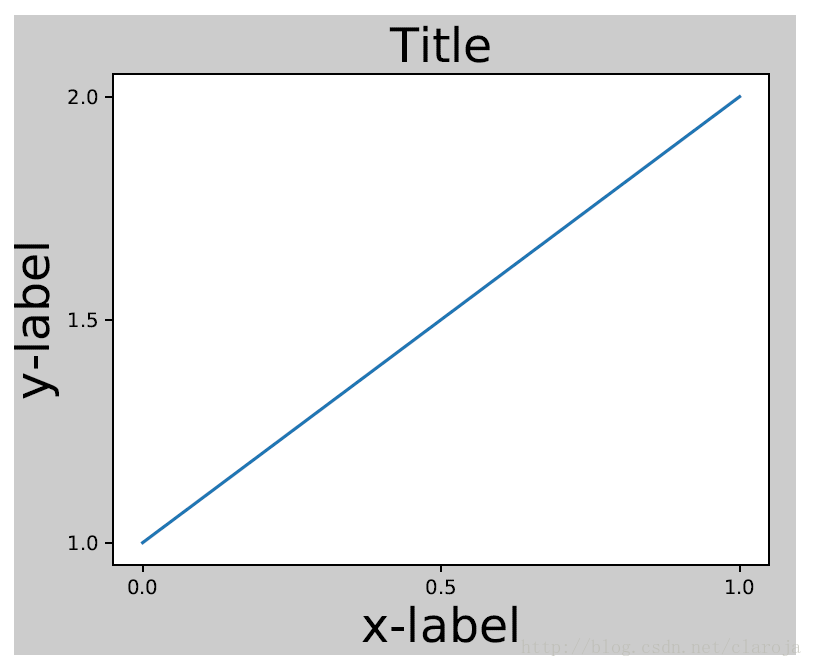
很多子圖的情況
plt.close('all')
fig, ((ax1, ax2), (ax3, ax4)) = plt.subplots(nrows=2, ncols=2)example_plot(ax1) example_plot(ax2) example_plot(ax3) example_plot(ax4)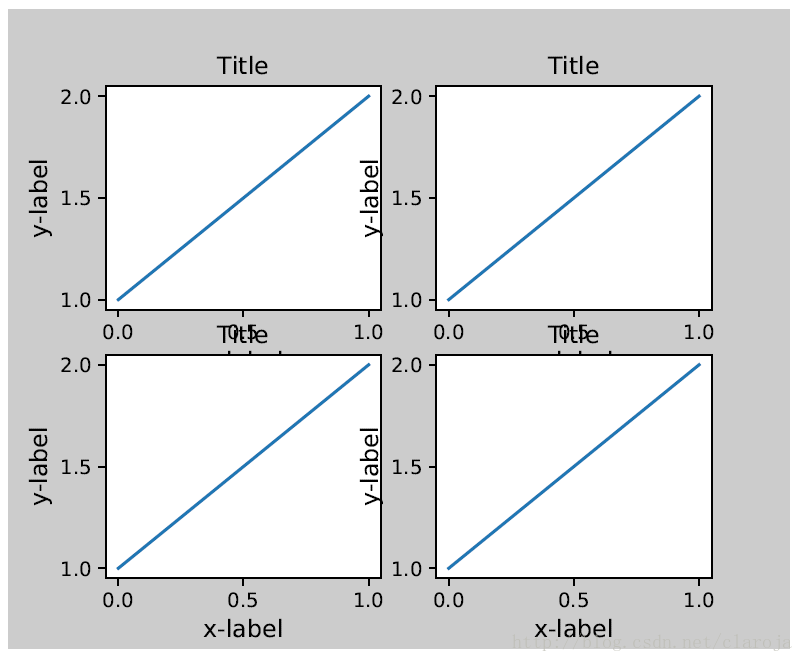
plt.tight_layout()
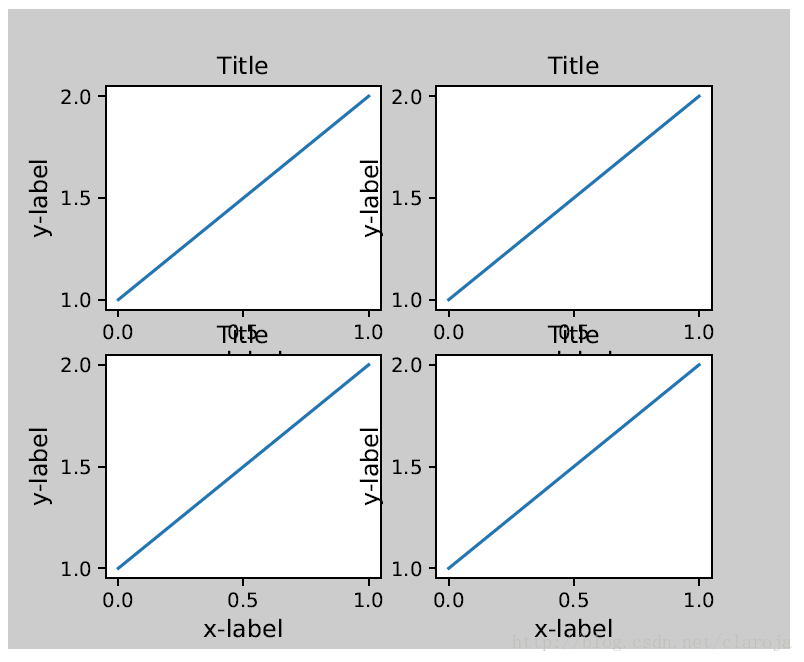
tight_layout()含有pad,w_pad和h_pad
plt.tight_layout(pad=0.4, w_pad=0.5, h_pad=1.0)
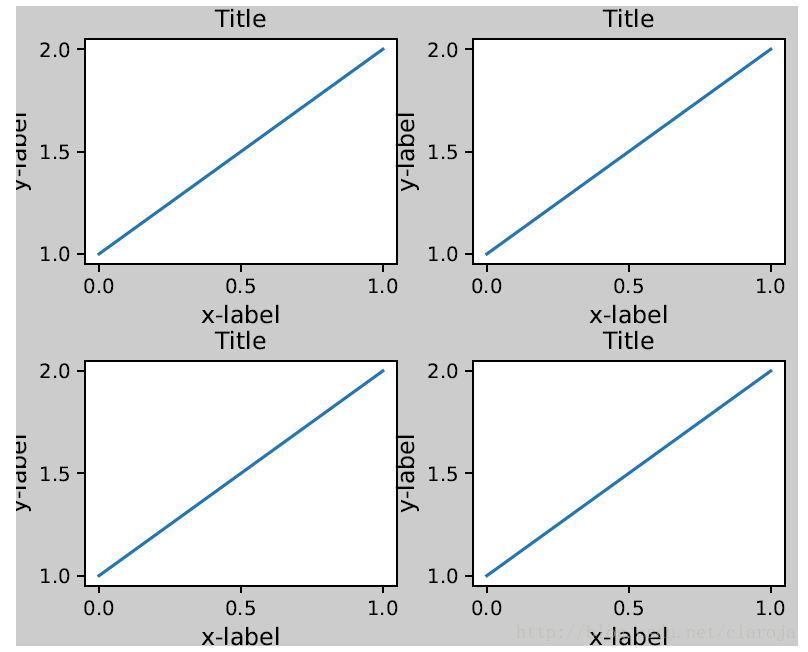
GridSpec擁有它自己的tight_layout()方法
plt.close('all')fig = plt.figure()
import matplotlib.gridspec as gridspecgs1 = gridspec.GridSpec(2, 1)ax1 = fig.add_subplot(gs1[0])ax2 = fig.add_subplot(gs1[1])
example_plot(ax1)
example_plot(ax2)
gs1.tight_layout(fig)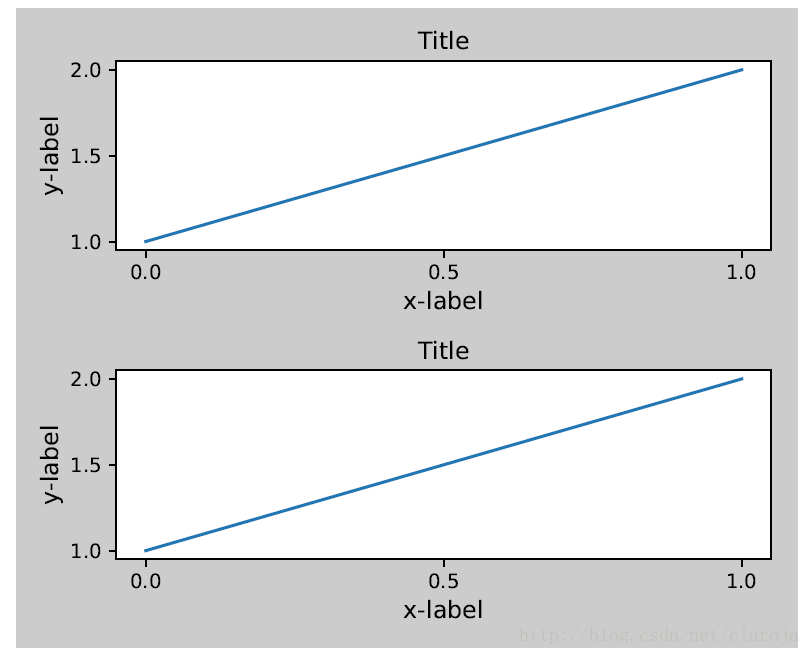
你可以指定一個可選擇的方形(rect)參數來指定子圖(subplot)到畫板(figure)的距離
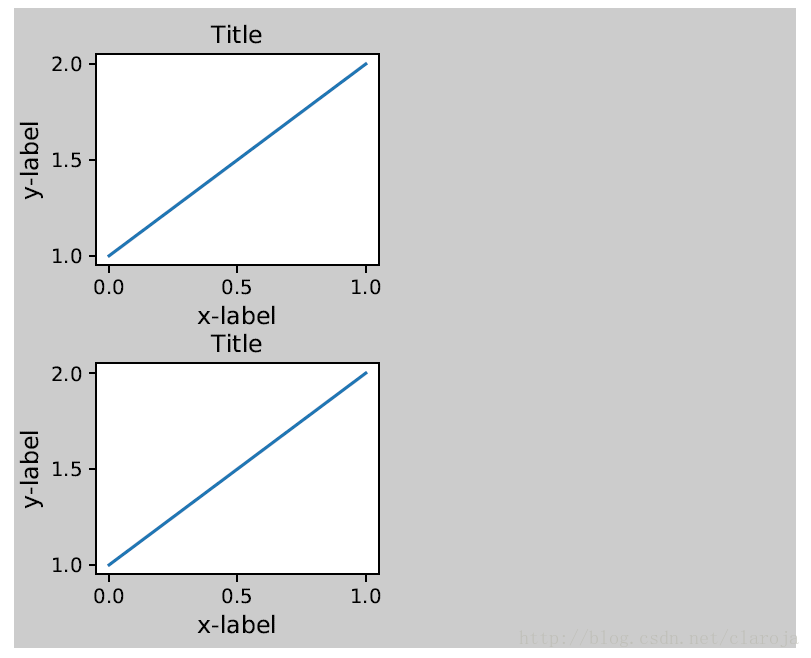
這個還可以應用到復合的gridspecs中
gs2 = gridspec.GridSpec(3, 1)
for ss in gs2:
ax = fig.add_subplot(ss)
example_plot(ax)
ax.set_title("")
ax.set_xlabel("")
ax.set_xlabel("x-label", fontsize=12)
gs2.tight_layout(fig, rect=[0.5, 0, 1, 1], h_pad=0.5)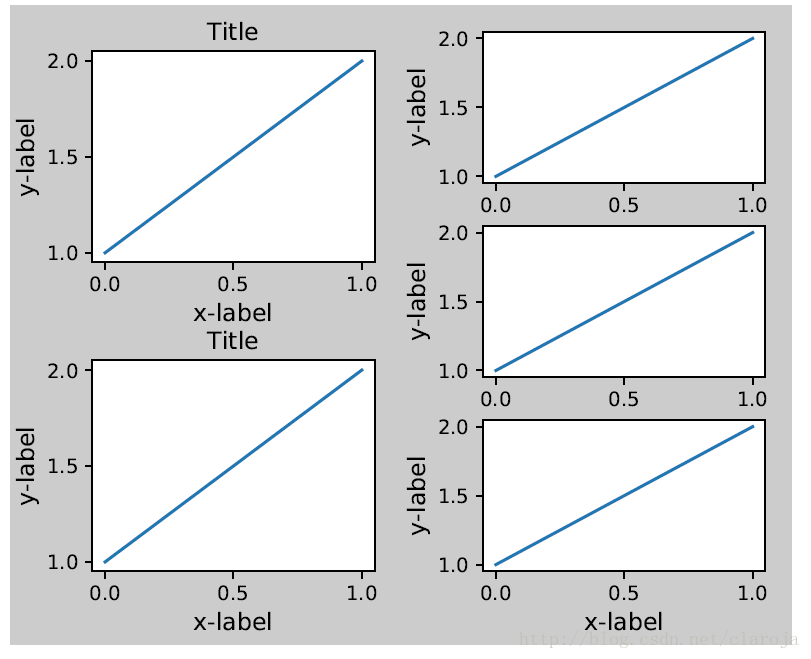
plt.close('all')
fig = plt.figure()from mpl_toolkits.axes_grid1 import Grid
grid = Grid(fig, rect=111, nrows_ncols=(2,2),
axes_pad=0.25, label_mode='L',
)for ax in grid:
example_plot(ax)
ax.title.set_visible(False)
plt.tight_layout()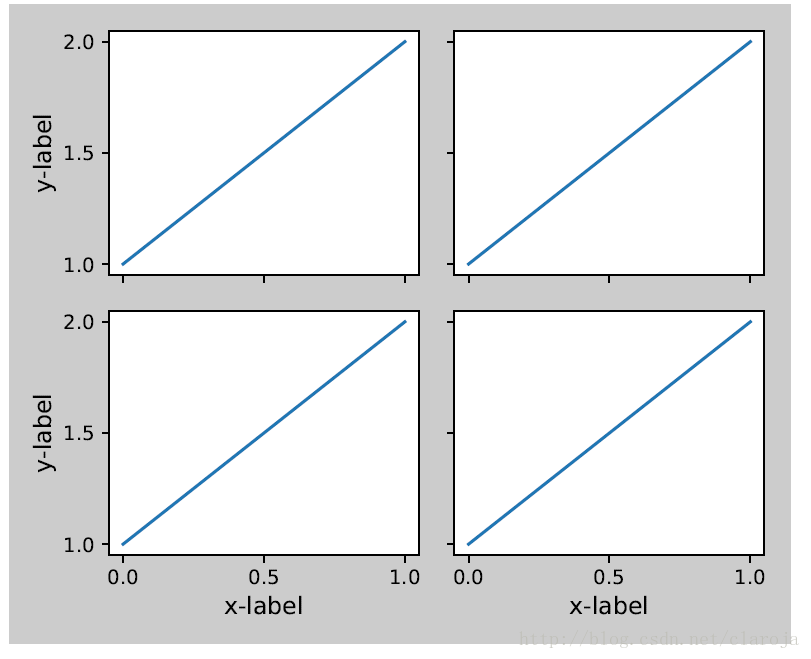
colorbar是Axes的實例,而不是Subplot的實例,所以tight_layout不會起作用,在matplotlib v1.1中,你把colorbar作為一個subplot來使用gridspec。
plt.close('all')
arr = np.arange(100).reshape((10,10))
fig = plt.figure(figsize=(4, 4))
im = plt.imshow(arr, interpolation="none")
plt.colorbar(im, use_gridspec=True)
plt.tight_layout()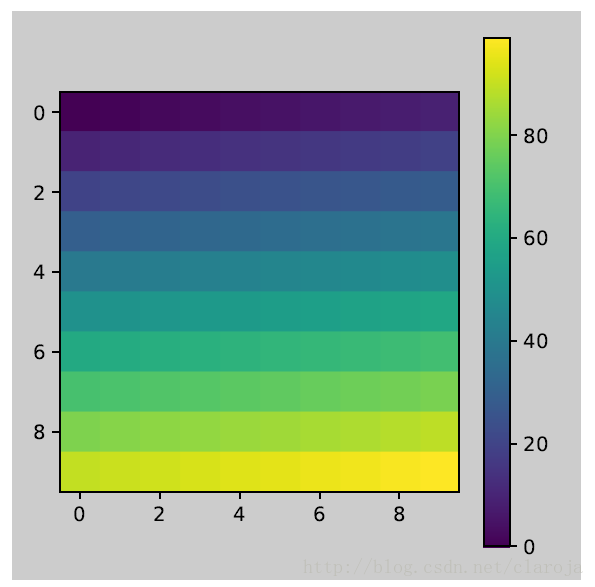
另外一個方法是,使用AxesGrid1工具箱為colorbar創建一個軸Axes
plt.close('all')
arr = np.arange(100).reshape((10,10))
fig = plt.figure(figsize=(4, 4))
im = plt.imshow(arr, interpolation="none")from mpl_toolkits.axes_grid1 import make_axes_locatable
divider = make_axes_locatable(plt.gca())
cax = divider.append_axes("right", "5%", pad="3%")
plt.colorbar(im, cax=cax)
plt.tight_layout()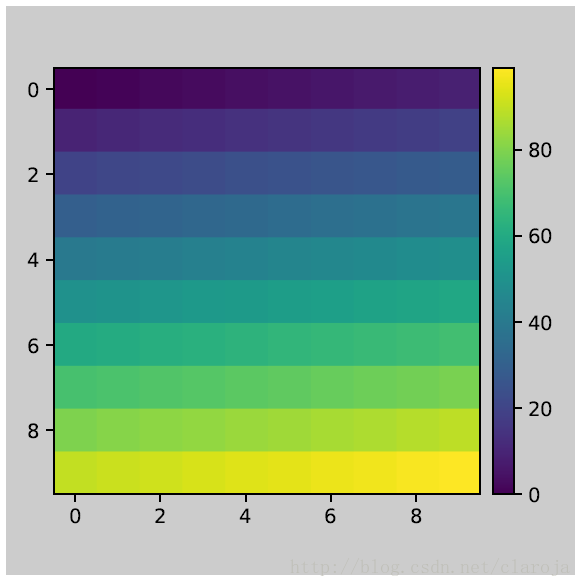
看完了這篇文章,相信你對“ matplotlib subplot子圖怎么用”有了一定的了解,如果想了解更多相關知識,歡迎關注億速云行業資訊頻道,感謝各位的閱讀!
免責聲明:本站發布的內容(圖片、視頻和文字)以原創、轉載和分享為主,文章觀點不代表本網站立場,如果涉及侵權請聯系站長郵箱:is@yisu.com進行舉報,并提供相關證據,一經查實,將立刻刪除涉嫌侵權內容。